|
|
|
|
 |
Floris Arntzenius
|
|
(9 June 1864 - 16 February 1925) was a Dutch painter, water-colourist, illustrator and printmaker. He is considered a representative of the younger generation of the Hague School.
Arntzenius was born in Surabaya on the island of Java where his father served in the Royal Dutch East Indies Army. In 1875, at the age of 11, he was sent to the Netherlands to Amsterdam to live with his aunt and uncle in order to complete his education.
In 1882 he became a student of Frederik Nachtweh, under Nachtweh's supervision he gained admission to the Rijksacademie van Beeldende Kunsten. During his time at the Rijksacademie, from 1883 to 1888, his teachers included August Allebe and Barend Wijnveld, and amongst his fellow students were Isaac Israëls, George Breitner, Willem Witsen and Jan Veth. After his studies in Amsterdam he spent another two years at the Koninklijke Academie voor Schone Kunsten in Antwerp, studying under Charles Verlat.
Back in Amsterdam, Arntzenuis became a member of the artist's societies Arte et Amicitiae (1890) and St. Lucas (1891), and he had a studio at the Sarphatistraat. In 1892 his mother became widowed and moved to The Hague and Arntzenuis also moved there to keep her company. Around the same time his former fellow students Isaac Israëls and George Breitner left The Hague for Amsterdam to be a part of the capital's more vibrant artistic climate. At The Hague the established painters of the first generation of the Hague School dominated artistic life.
Spuistraat, 1919, Haags Historisch MuseumArntzenius became a member of the artist's society Pulchri Studio in The Hague in 1892. From 1893 to 1895 he shared Bernard Blommers' former studio with Cornelis Antonie van Waning. He also contributed illustrations to Elsevier Geïllustreerd Maandschrift from 1892 to 1894. In 1896 he was admitted to the Hollandsche Teeken Maatschappij, a society that promoted the medium of watercolours among its members. He got married in 1900, to Lide Doorman, a talented painter of floral still lives, who lived in the house opposite of Arntzenius' mother, together they had four daughters, who he frequently painted.
|
|
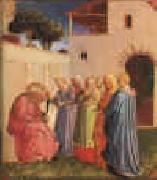 |
Fra Angelico
|
|
Fra Angelico Galleries
b.c. 1400, Vicchio, Florence
d.Feb. 18, 1455, Rome
Fra Angelico (c. 1395 ?C February 18, 1455), born Guido di Pietro, was an Early Italian Renaissance painter, referred to in Vasari's Lives of the Artists as having "a rare and perfect talent".
Known in Italy as il Beato Angelico, he was known to his contemporaries as Fra Giovanni da Fiesole (Brother John from Fiesole). In Giorgio Vasari's Lives of the Artists, written prior to 1555, he was already known as Fra Giovanni Angelico (Brother Giovanni the Angelic One).
Within his lifetime or shortly thereafter he was also called Il Beato (the Blessed), in reference to his skills in painting religious subjects. In 1982 Pope John Paul II conferred beatification, thereby making this title official. Fiesole is sometimes misinterpreted as being part of his formal name, but it was merely the name of the town where he took his vows, used by contemporaries to separate him from other Fra Giovannis. He is listed in the Roman Martyrology as Beatus Ioannes Faesulanus, cognomento Angelicus??"Blessed Giovanni of Fiesole, nicknamed Angelico".
Fra Angelico was working at a time when the style of painting was in a state of change. This process of change had begun a hundred years previous with the works of Giotto and several of his contemporaries, notably Giusto de' Menabuoi, both of whom had created their major works in Padua, although Giotto was trained in Florence by the great Gothic artist, Cimabue, and painted a fresco cycle of St Francis in the Bardi Chapel in Santa Croce. Giotto had many enthusiastic followers, who imitated his style in fresco, some of them, notably the Lorenzetti, achieving great success. |
|
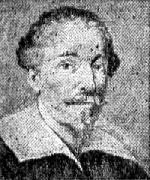 |
Francesco Albani
|
|
(March 17 or August 17, 1578 COctober 4, 1660) was an Italian Baroque painter.
Born at Bologna, his father was a silk merchant who intended to instruct his son in the same trade; but by age twelve, Albani became an apprentice under the competent mannerist painter Denis Calvaert, where he met Guido Reni. Soon he followed Reni to the so-called "Academy" run by the Carracci family: Annibale, Agostino, and Ludovico. This studio fostered the careers of many painters of the Bolognese school, including Domenichino, Massari, Viola, Lanfranco, Giovanni Francesco Grimaldi, Pietro Faccini, Remigio Cantagallina, and Reni.
In the year 1600, Albani moved to Rome to work in the fresco decoration of the gallery of the Palazzo Farnese, being completed by the studio of Annibale Carracci. Rome, under Clement VIII Aldobrandini (1592-1605) was exhibiting some degree of administrative stability and renewed artistic patronage. While pope Clement was born from a Florentine family residing in Urbino, his family was allied by marriage to the Emilia-Romagna and the Farnese, since Ranuccio I Farnese, Duke of Parma had married Margherita Aldobrandini. Parma, like Bologna, are part of the Region of Emilia-Romagna. Thus it was not surprise that Cardinal Odoarde Farnese, Ranuccio's brother, chose the Carraccis from Bologna for patronage, thereby establishing Bolognese predominance of Roman fresco painting for nearly two decades. |
|
|
|
|
|
|
|
|
|
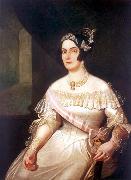 |
Francisco Pedro do Amaral
|
|
Amaral, Francisco Pedro do (1790 - 1831)
painted Portrait of Domitila de Castro Canto e Melo, Marquise of Santos in 19th century
|
|
|
|
|
|
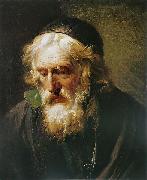 |
Francois-Andre Vincent
|
|
(December 30, 1746 - August 4, 1816) was a French neoclassical painter.
He was the son of the miniaturist François-Elie Vincent and studied under Joseph-Marie Vien. He travelled to Rome, where he won the Prix de Rome in 1768. From 1771 to 1775 he studied there at the Academie de France.
In 1790 Vincent was appointed master of drawings to Louis XVI of France, and in 1792 he became a professor at the Academie royale de peinture et de sculpture in Paris. In 1800 he married the painter Adelaïde Labille-Guiard.
Belisarius by François-Andre Vincent, painted 1776. He was a leader of the neoclassical and historical movement in French art, along with his rival Jacques-Louis David, another pupil of Vien. He was influenced by the art of classical antiquity, by the masters of the Italian High Renaissance, especially Raphael, and among his contemporaries, Jean-Honore Fragonard.
He was one of the founder members of the Academie des beaux-arts part of the Institut de France and the successor to the Academie royale in 1795. |
|
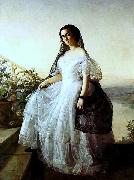 |
Francois-Auguste Biard
|
|
(June 30, 1799 - June 20, 1882) was a French genre painter.
Born at Lyon, he traveled around the world, sketching on the way. He was particularly successful in rendering burlesque groups.
His painting, Scenes on the Coast of Africa, depicted on the right, was the inspiration behind Isaac Julien's short film The Attendant (1993). Biard was a known abolitionist against the Atlantic slave trade.
Wikimedia Commons has media related to: Auguste François Biard
This article incorporates text from the public domain 1907 edition of The Nuttall Encyclopædia.
|
|
|
|
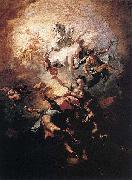 |
Franz Anton Maulbertsch
|
|
(June 7, 1724 -- August 8, 1796) was an Austrian painter and engraver, one of the most renowned exponents of roccoco painting in the German region.
Maulbertsch was born in Langenargen and studied in the Academy of Vienna. Through the knowledge of Paul Troger, he was influenced by the Venetian painters Piazzetta and Giovanni Battista Pittoni. He also studied the frescoes by Sebastiano Ricci in the Schönbrunn Palace in Vienna, and frequented Giambattista Tiepolo, who was active in Werzburg starting from 1750.
An appreciated frescoer, he received numerous commissions, mostly of ecclesiastical theme. He produced art for churches in Bicske, Kalocsa, Vienna's Michaelerkirche and Piaristenkirche Maria Treu. He also decorated the Porta Coeli in Moravia, the Kromeř Archbishop's Palace and the villa of Halbturn.
He also painted a portrait of Narcissus of Jerusalem |
|
 |
Frederic Auguste Bartholdi
|
|
French Sculptor, 1834-1904,was a French sculptor. He is also known as Amilcar Hasenfratz, a pseudonym used for his paintings of Egyptian subjects, apparently because of concern that his work in another medium would distract from his sculpture. Born in Colmar, Alsace, Bartholdi went to Paris to further his studies in architecture as well as painting. Then he made a long trip to Egypt and Yemen, where he heard about the Suez project. He came back to his native city to become an architect. Bartholdi was a freemason, he was initiated on October 14, 1875 in the lodge LeAlsace-Lorraine, Grand Orient of France. |
|
 |
Frederick Arthur Bridgman
|
|
American Painter, 1847-1928
was an American artist, born in Tuskegee, Alabama. An American Southerner, born in Tuskeegee, Alabama, the son of a physician, Bridgman would become one of the United States' most well-known and well-regarded painters and become known as one of the world's most talented "Orientalist" painters. He began as a draughtsman in New York City, for the American Bank Note Company in 1864-1865, and studied art in the same years at the Brooklyn Art Association and at the National Academy of Design; but he went to Paris in 1866 and became a pupil of Jean-Leon Gerôme. Paris then became his headquarters. A trip to Egypt in 1873-1874 resulted in pictures of the East that attracted immediate attention, and his large and important composition, The Funeral Procession of a Mummy on the Nile, in the Paris Salon (1877), bought by James Gordon Bennett, brought him the Cross of the Legion of Honor. Other paintings by him were An American Circus in Normandy, Procession of the Bull Apis (now in the Corcoran Gallery of Art, Washington, D.C.), and a Rumanian Lady (in the Temple collection, Philadelphia, Pennsylvania). In 1867, Bridgman entered the studio of the noted academic painter Jean-Leon Gerôme (1824-1904), where he was deeply influenced by Gerôme's precise draftsmanship, smooth finishes, and concern for Middle-Eastern themes. (Bridgman would even become known as "the American Gerôme.") No mere imitator, however, Bridgman would later adopt a more naturalistic aesthetic, emphasizing bright colors and painterly brushwork. Bridgman made his first trip to North Africa between 1872 and 1874, dividing his time between Algeria and Egypt. There he executed approximately three hundred sketches, which became the source material for several later oil paintings. Additional visits to the region throughout the 1870s and 1880s allowed him to amass a collection of costumes, architectural pieces, and objets d'art, which often appear in his paintings. (Amusingly, John Singer Sargent noted that Bridgman's overstuffed studio, along with the Eiffel Tower, were Paris's must-see attractions.) Though Bridgman maintained a lifelong connection to France, his popularity in America never waned. Indeed, in 1890, the artist had a one-man show of over 400 pictures in New York's 5th Avenue galleries. When the show moved to Chicago's Art Institute, it contained only 300 works - testimony to the high number of sales Bridgman had made. |
|
 |
Frederick goodall,R.A.
|
|
1822-1904
son of Edward Goodall. He was taught by his father and first exhibited at the Royal Academy in 1838. His earliest subjects were rural genre scenes and landscapes, many derived from sketching trips made between 1838 and 1857 in Normandy, Brittany, Wales, Ireland, Scotland and Venice. In the 1850s he also painted subjects from British history. More significant for his subsequent career was his visit to Egypt from September 1858 to April 1859. In Cairo he lived in a house in the Coptic quarter with Carl Haag. Together the two artists went on expeditions to Giza to draw the Nile, the Sphinx and Pyramids, and to Suez and across the Red Sea to the Wells of Moses at 'Uyen Mesa. Goodall also made rapid sketches in the crowded streets of Cairo. 'My sole object in paying my first visit to Egypt', he wrote, 'was to paint Scriptural subjects'. The first of these, Early Morning in the Wilderness of Shur (London, Guildhall A.G.), was exhibited at the Royal Academy in 1860 and won him critical and popular acclaim. In 1864 he was elected RA. Much of the rest of Goodall's long career was devoted to painting similar scenes of Egyptian life with biblical associations, for which he made reference to his sketches and to Egyptian artefacts and clothing. Their success prompted a second visit to Egypt in 1870-71. |
|
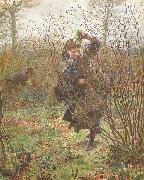 |
Frederick Walker,ARA,RWS
|
|
1840-1875
English painter and illustrator. He acquired his training in drawing and painting through study in the British Museum (where he copied heavily from the Antique), a short period spent in an architect's office, life classes at Leigh's school, a studentship at the Royal Academy and three years' employment as a draughtsman on wood with the commercial engraver Josiah Wood Whymper (1813-1903). |
|
|
|
 |
Friedrich August von Kaulbach
|
|
(2 June 1850, Hannover - 26 July 1920, Munich, Germany) was a German portraitist and historical painter. He was the son of Theodor Friedrich Wilhelm Christian Kaulbach (1822 - 1903), the court painter at Hannover, and the great nephew of Wilhelm Kaulbach, another prominent member of the Kaulbach family of artists. He learned to paint from his father, and later was a student of August von Kreling at Nuremberg. He sought to emulate the artist Hans Holbein. |
|
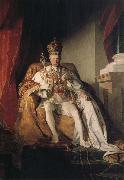 |
Friedrich von Amerling
|
|
Austrian Academic Painter, 1803-1887,Austrian painter. He came from a family of craftsmen and studied (1815-24) at the Akademie der bildenden Kenste, Vienna, where one of his teachers was the conservative history painter Hubert Maurer (1738-1818). From 1824 to 1826 he attended the Academy in Prague, where he was taught by Josef Bergler. In 1827 and 1828 Amerling stayed in London, and he met the portrait painter Sir Thomas Lawrence, whose work was to be a strong influence on Amerling's painting during the next two decades. Amerling also travelled to Paris and Rome but was recalled to Vienna on an official commission to paint a life-size portrait of the emperor Francis I of Austria (Vienna, Ksthist. Mus.). With this work, |
|
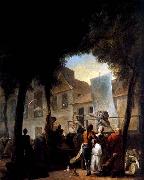 |
Gabriel Jacques de Saint-Aubin
|
|
French Painter, 1724-1780,Draughtsman, etcher and painter, brother of (1) Charles-Germain de Saint-Aubin. He studied with the painters Etienne Jeaurat and Hyacinthe Colin de Vermont, but failed three times to win the Prix de Rome (competition paintings, 1752-4; Paris, Louvre). He broke with the Academie Royale, preferring to support and exhibit at the Academie de St Luc. Although he continued to paint such pictures as a Street Show in Paris (c. 1760; London, N.G.; other examples in Rouen, Mus. B.-A.), he is best known as a draughtsman and etcher. He was a passionate and unconventional observer of the sights of the Paris streets and of the social scene. Dacier saw him as the 'man who drew at all times and in all places', and his contemporary Jean-Baptiste Greuze spoke of his 'priapism of draughtsmanship'. In his many drawings he combined pencil, black and red chalk, bistre, ink and watercolour to create dazzling spontaneous effects. He drew incidents that struck him as he wandered the streets, or entertainments that he attended. He recorded them, noting dates and times, in sketchbooks (e.g. Paris, Louvre and Stockholm, Nmus.) or sometimes in the margins and blank pages of printed books that he was carrying (such as a volume of the poems of Jean-Michel Sedaine, in the Mus. Cond?, Chantilly). These drawings of contemporary incidents include the Fire at the Foire Saint-Germain on the Night of 16-17 May 1762 (ex-David Weill priv. col.) and the Crowning of Voltaire at the Theetre-Franeais in 1778 (Paris, Louvre; see fig.). He went regularly to the Salon of the Academie Royale and to art sales, covering the margins and flyleaves of his sale catalogues and Salon livrets with tiny sketches of works of art and the passing scene. One hundred of these illustrated catalogues were among his effects when he died, and of these about a third survive. These include the livrets for the Salons of 1761, 1769 and 1777 (all Paris, Bib. N.), as well as the catalogues of the sales of Louis-Michel van Loo in 1772 and Charles Natoire in 1778 (both Paris, Bib. N.), and that of Pierre-Jean Mariette in 1775 (Boston, MA, Mus. F.A.). Together with his etchings and large watercolours (e.g. Paris, Louvre) of the Louvre's Salon Carre at the time of the exhibitions of 1753, 1767 and 1769, |
|
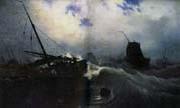 |
Garneray Ambroise
|
|
French Artist ,
Paris 1783-1857
French corsair, painter and writer. He served under Robert Surcouf and Jean-Marie Dutertre, and was held prisoner by the British for eight years. Garneray was born in Paris (on Rue Saint-Andre-des-arts, in the Latin Quarter) on February 9, 1783. He was the elder son of Jean-Francois Garneray (1755 - 1837), painter of the king, who was pupil of Jacques-Louis David. At thirteen, he joined the Navy as a seaman, encouraged by his cousin, Beaulieu-Leloup, commander of the frigate Forte ("the Stout one"). Garneray sailed from Rochefort to the Indian Ocean with the frigate division under Sercey, to which the Forte belonged. Garneray took part in the various campaigns of Sercey division and witnessed the hardship it met in the battle against Arrogant and Victorious. He then served in 1798 on the corvette Brule Gueule ("Mouth burner"), which patrolled with the frigate Preneuse ("the Taker"). Returning from this campaign, the Brule Gueule and Preneuse were chased by a British squadron comprising two ships of the line, one frigate and one corvette; the French flew into a creek near Black River whose shallow waters prevented the British from pursuing. The next day, the British squadron attacked; the French had established strong defensive positions by installing the unusable batteries of their ships ashore, and repelled the British squadron. In 1799, |
|
|
|
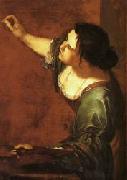 |
GENTILESCHI, Artemisia
|
|
Italian Baroque Era Painter, 1593-1652
Tuscan painter, daughter and pupil of Orazio Gentileschi, b. Rome. She studied under Agostino Tassi, her father's collaborator, who was convicted of raping the teen-age Artemisia in 1612. Over the years, she has been portrayed as a strumpet, a feminist victim or heroine, and an independent woman of her era and her life has been fictionalized in several novels and plays. In purely artistic terms, she achieved renown for her spirited execution and admirable use of chiaroscuro in the style of Caravaggio, and during her life she achieved both success and fame. In 1616 she became the first woman admitted to the Academy of Design in Florence. About 1638 she visited England, where she was in great demand as a portraitist. Among her works are Judith and Holofernes (Uffizi); |
|
|
|
|
|
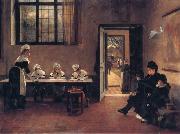 |
George Adolphus Storey
|
|
(1834-1919), Painter
was an English portrait painter, genre painter and illustrator. Storey was born in London, but educated in Paris. When he returned to London, he worked briefly for an architect before studying under J. M. Leigh and J.L. Dulong. Though not a pupil he was also encouraged by William Behnes the sculptor, whose studio he visited. He exhibited at the Royal Academy from 1852 and studied at the Royal Academy schools from 1854. He was strongly incluenced by the Pre-Raphaelites but gave them up under influence of Charles Robert Leslie. Storey worked in North London, establishing a reputation as a genre and portrait painter, and also as an illustrator. He drew elegant pictures of middle class people for love stories and the like. Storey became ARA in 1875 and was a member of the Arts Club from 1874-95. He exhibited at the British Institution, the Royal Society of British Artists in Suffolk Street and the New Watercolour Society. He also published his autobiography in 1899, containing valuable information about the St John's Wood Clique, of which he was a member until he moved to Hampstead. From 1900, he was also the Professor of Perspective at the Royal Academy, and became RA in 1914. |
|
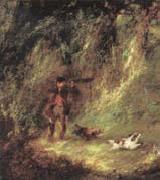 |
George Armfield
|
|
British, born circa 1808-1893
He was born in Wales
His father was a painter, who for some time had a studio at 54, Pall Mall, London and from his father, George Armfield obtained any artistic tuition he may have received.
|
|
|
|
|
|
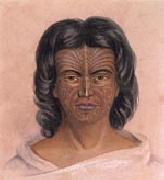 |
George French Angas
|
|
(1844-1932), was a portrait painter.
was an English explorer, naturalist and painter. He was the eldest son of George Fife Angas, prominent in the establishment of the new colony of South Australia. Despite showing remarkable talent in drawing, he was placed in a London business house by his father. He left on a tour of Europe and in 1842 published his first book, "Rambles in Malta and Sicily". As a result of this experience, he turned his back on the world of commerce, and directed his training towards a study of natural history, anatomical drawing and lithography. Embarking on his travels, he was soon to find his acquired skills extremely useful. Angas painted some of the earliest views of South Australia. Arriving in Adelaide in January 1844, he joined Sir George Grey on an expedition into the interior. He soon began an extensive series of journeys to the Murray River lakes, Barossa Valley, Fleurieu Peninsula and the South East, presenting his impressions of the newly established colony ?C its inhabitants, landscape, and its flora and fauna. Following a trip to New Zealand he returned to South Australia in 1845 and travelled to Port Lincoln. In the following year he returned for a short while to England. His next journey in 1846 was to South Africa, where he spent two years in Natal and the Cape, working on a series of drawings and watercolours which were published in 1849 as The Kafirs Illustrated. In this book were views of Cape Town, Durban, Wynberg, Genadendal, Paarl and Somerset West and plates depicting the local ethnic groups such as Hottentots, Malays and Zulus. He married Alicia Mary Moran in 1849, the marriage producing four daughters. In 1853 he was appointed to a position at the Australian Museum in Sydney, eventually becoming Director and staying a total of seven years. He was in Sydney when gold was first discovered near Bathurst, New South Wales. Travelling there to record the gold diggings he executed a number of drawings of the scenes that he found. These were published in Sydney and subsequently in London. Angas returned to South Australia in 1860, and finally went back to England in 1863. |
|
|
|
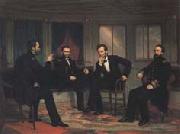 |
George P.A.Healy
|
|
American Painter, 1813-1894
American painter, active also in Europe. At the age of 17 he set up a studio in Boston after receiving encouragement from Thomas Sully, who was painting portraits there. Despite his youth and lack of training, he presented himself to the society figure Mrs Harrison Gray Otis and asked if he might paint her portrait (untraced); she agreed and later sponsored Healy's first trip abroad. In 1834 he entered the studio of Antoine-Jean Gros; the French master's suicide the following year ended Healy's only sustained period of artistic study. In Gros's studio he first encountered Thomas Couture, but they did not meet again until the next decade |
|
|
|
 |
Gioacchino Assereto
|
|
(1600 - 28 June 1649) was an Italian painter of the early Baroque period, active in Genoa.
Gioacchino Assereto, David with the Head of Goliath.He initially apprenticed with Luciano Borzone and later Giovanni Andrea Ansaldo. He painted two vault frescoes in the church of Santissima Annunziata del Vastato: David and Abimelech and Santi Giovanni and Pietro healing the lame. He also shows the influence of Bernardo Strozzi, a tenebrism moderated by venetian coloristic effects and garbing the subjects in modern peasant garb, in paintings such as Moses obtaining water from the Rock (Prado Museum, Madrid). Orazio dee Ferrari may have worked with Assereto in Ansaldoes studio.
Paintings by Gioacchino Assereto can also be seen at the Detroit Institute of Art and the Museum of Fine Arts in Budapest,Hungary.
|
|
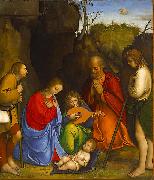 |
Giovanni Agostino da Lodi
|
|
was an Italian painter who was active from c. 1495 to c. 1525.
The attribution of his works has been dubious for centuries, until his style and career was defined by the American art historian Bernard Berenson in the 1960s. One of his first identified work is the Pala dei Barcaioli ("Boatmen Altarpiece") in the church of San Pietro Martire at Murano. His only signed work is the St. Peter and St. John the Evangelist in the Pinacoteca di Brera, which shows Lombard influeces, such as that of Bramantino.
Later he was also influenced by Leonardo da Vinci's style, as visible in the Christ Washing the Feet of the Apostles in the Gallerie dell'Accademia of Venice. After moving to Venice in the wake of Ludovico Sforza's fall, he returned to Milan in 1506. He subsequently executed works for privates and for the Certosa di Pavia; one of his late works, the Calvary, is housed in the National Gallery in Prague. He also collaborated with Marco d'Oggiono for a polyptych in the church of Santa Maria della Pace in Milan, some panels of which are now in the Pinacoteca di Brera.
|
|
 |
Giovanni Antonio Boltraffio
|
|
was an Italian painter of the High Renaissance from Lombardy, who worked in the studio of Leonardo da Vinci.[2] Boltraffio and Bernardino Luini are the strongest artistic personalities to emerge from Leonardo's studio. According to Giorgio Vasari, he was of an aristocratic family and was born in Milan.
His major painting of the 1490s is the Resurrection (painted with fellow da Vinci pupil Marco d'Oggiono and now in the Gemäldegalerie, Berlin). A Madonna and Child in the Museo Poldi Pezzoli of Milan, is one of the high points of the Lombard Quattrocento.
His portraits, often in profile, and his half-length renderings of the Madonna and Child are Leonardesque in conception, though the clean hard edges of his outlines lack Leonardo's sfumato.
In Bologna, where he remained in 1500-1502, he found sympathetic patrons in the Casio family, of whom he painted several portraits and for whom he produced his masterwork, the Pala Casio for the Church of the Misericordia (Louvre Museum); it depicts a Madonna and Child with John the Baptist and Saint Sebastian and two Kneeling Donors, Giacomo Marchione de' Pandolfi da Casio and his son, the Bolognese poet Girolamo Casio[3], who mentioned Boltraffio in some of his sonnets. Boltraffio's portrait of Girolamo Casio is at the Pinacoteca di Brera, Milan.
|
|
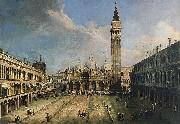 |
Giovanni Antonio Canal
|
|
(28 October 1697 - 19 April 1768) better known as Canaletto, was a Venetian painter famous for his landscapes, or vedute, of Venice. He was also an important printmaker in etching.
He was born in Venice as the son of the painter Bernardo Canal, hence his mononym Canaletto ("little Canal"), and Artemisia Barbieri. His nephew and pupil Bernardo Bellotto was also an accomplished landscape painter, with a similar painting style, and sometimes used the name "Canaletto" to advance his own career, particularly in countrieseGermany and Polandewhere his uncle was not active.
|
|
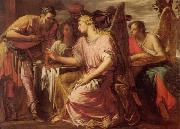 |
Giovanni Antonio Fumiani
|
|
(1645-1710) was an Italian painter of the Baroque period.
Born in Venice in 1645, he trained in Bologna under Domenico degli Ambrogi, a specialist in quadratura, but by 1668 he was back in Venice, where he painted a Virgin and Saints in San Benedetto. He was influenced by Ludovico Carracci and Alessandro Tiarini, and soon also became interested in the work of Paolo Veronese, so that he started to use elaborate architectural settings and brighter colours. He painted a Virgin Appearing to Pius V (1674; Vicenza, S Lorenzo), whose monumentality foreshadows Tiepolo, whereas mosaics in San Marco, created in 1677 from Fumianies cartoons, are closer to the idiosyncratic art of Pietro della Vecchia. He contributed to the decoration of San Rocco (1675, 1676, 1678), where he painted a large canvas of the Charity of St Roch on the ceiling of the nave, In his smaller paintings, however, such as the modelli (Florence, Uffizi) painted for the Ferdinand de Medici, Grand Prince of Tuscany, for whom he worked for a long time, with Niccole Cassana acting as intermediary, Fumiani revealed a lively decorative sense and a taste for animated, sensual subjects that produced works of great quality. His last work is the large lunette depicting Frederick III visiting St Zacharyes Convent in the Company of the Doge (Venice, San Zaccaria).
The decoration of San Pantalon with scenes from the Life of St Pantaleon (1680-1704) utilized canvases to cover a large ceiling (25x50 m), an ambitious undertaking, both in its scale and in the unity of the magniloquent images, that parallels Andrea Pozzoes decoration at the church of Sant'Ignazio in Rome. Fumiani was responsible for painting what is claimed to the largest painting on canvas in the world and covers the whole of the ceiling of the church Chiesa di San Pantaleone Martire, known as San Pantalon, in Venice. The painting depicts The Martyrdom and Apotheosis of St Pantalon, which he painted from 1680 until 1704. He putatively died from a fall from a scaffold, although some sources date his death to six years after he stopped work on the canvas
|
|
 |
Giovanni Antonio Pellegrini
|
|
(29 April 1675 -- November 1741) was a widely-travelled Rococo decorative painter from Venice, where he was born and died. He is considered to be one of the most important Venetian painters of the early 18th century, melding the Renaissance style of Paolo Veronese with the Baroque of Pietro da Cortona and Luca Giordano,and is considered an important predecessor of Giovanni Battista Tiepolo. One of his pupils was Antonio Visentini.
Pellegrini's father, also Antonio, was a shoemaker from Padua. Pellegrini first studied under Girolamo Genga, but was later a pupil of Paolo Pagani and of Sebastiano Ricci. He married Angela Carriera, the sister of Rosalba Carriera, in c.1704. Pellegrini decorated the dome above the staircase at the Scuola Grande di San Rocco in 1709.
He is mainly known for his work in England, which he visited from 1708 to 1713 at the invitation of the Earl of Manchester, and where he had considerable success. He painted murals in a number of English country houses, including Castle Howard (mostly destroyed in 1940) and Kimbolton Castle, Narford Hall, and in London, 31 St James's Square for the Duke of Portland, where George Vertue noted in his notebooks "the hall and Staircase and one or two of the great rooms". He became a director of Sir Godfrey Kneller's Academy in London in 1711. He submitted designs for the decorating the interior dome of the new St Paul's Cathedral, and is said to have been Christopher Wren's favourite painter, but did not win the commission, losing out to Sir James Thornhill.
|
|
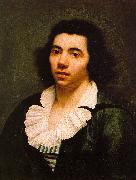 |
Girodet-Trioson, Anne-Louis
|
|
French Neoclassical Painter, 1767-1824
French painter. Originally named Girodet de Roussy or Roucy, he was a student of J.-L. David, and his classical training was sometimes at variance with his often eccentrically romantic expression. He won the Prix de Rome and while in Italy painted the Sleep of Endymion (1791; Louvre), a sensual and erotically ambiguous work that brought him widespread recognition. His Deluge (Louvre) demonstrates Girodet's interest in unusual color and lighting problems. Much of his work, including a series for Malmaison (Napoleon's residence), glorifies Napoleon. |
|
 |
Giuseppe Abbati
|
|
Italian, 1836-1868
Abbati was born in Naples and received early training in painting from his brother Vincenzo. He participated in Garibaldi 1860 campaign, suffering the loss of his right eye at the Battle of Capua. Afterwards he moved to Florence where, at the Caffe Michelangiolo, he met Giovanni Fattori, Silvestro Lega, and the rest of the artists who would soon be dubbed the Macchiaioli.
While his early paintings were interiors, he quickly became attracted to the practice of painting landscapes en plein air. His activity as a painter was interrupted during 1866 when he enlisted again in the army for the Third Independence War, during which he was captured by the Austrians and held in Croatia.
Returning to civilian life at the end of the year, he moved to Castelnuovo della Misericordia and spent the final year of his life painting in the countryside. Abbati died at the age of thirty-two in Florence after his own dog bit him, infecting him with rabies.
Giuseppe Abbati, The Tower of the Palazzo del Podesta, 1865, oil on wood, 39 x 32 cm.His paintings are characterized by a bold treatment of light effects. He often painted a luminous landscape scene as seen through the doorway of a darkened interior, as in the View from the Wine Cellar of Diego Martelli (1866). Some of his late landscapes are in the greatly elongated horizontal format often favored by the Macchiaioli. |
|
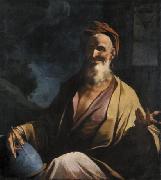 |
Giuseppe Antonio Petrini
|
|
(October 23, 1677- c. 1755-9) was a painter of the late-Baroque, active mainly in Lugano, present-day Switzerland.
St. Andrew
City Museum of Rimini, ItalyWhile born in Carona in Canton Ticino and died in Lugano, both in Switzerland, Petrini belongs to the Northern Italian or Lombard heritage of baroque painting. He possibly apprenticed with Bartolomeo Guidobono after 1700. While some works can be found in Como and Bergamo, most are located in Lugano and the surrounding area. He is also listed between 1711 and 1753 as fabbriciere of the church of Madonna deOnegro in Carona. He often painted "portraits" of historical figures including saints, philosophers, and scientists for patrons. One of his more prominent examples is his depiction of an auster St. Peter emerging from the shadows to pinpoint some lines in the gospel. He painted another St. Peter for the parish church of Dubino. Pietro Ligari classified him among the speculative painters, since these portraits, by nature, were imagined.
|
|
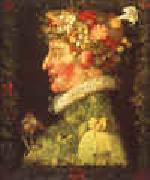 |
Giuseppe Arcimboldo
|
|
b.c. 1527, Milan,
d.1593, Milan Italian Giuseppe Arcimboldo Galleries
Arcimboldo was born in Milan in 1527, the son of Biagio, a painter who did work for the office of the Fabbrica in the Duomo.Arcimboldo was commissioned to do stained glass window designs beginning in 1549, including the Stories of St. Catherine of Alexandria vitrage at the Duomo. In 1556 he worked with Giuseppe Meda on frescoes for the Cathedral of Monza. In 1558, he drew the cartoon for a large tapestry of the Dormition of the Virgin Mary, which still hangs in the Como Cathedral today.
In 1562 he became court portraitist to Ferdinand I at the Habsburg court in Vienna, and later, to Maximilian II and his son Rudolf II at the court in Prague. He was also the court decorator and costume designer. King Augustus of Saxony, who visited Vienna in 1570 and 1573, saw Arcimboldo's work and commissioned a copy of his "The Four Seasons" which incorporates his own monarchic symbols.
Arcimboldo's conventional work, on traditional religious subjects, has fallen into oblivion, but his portraits of human heads made up of vegetables, fruit and tree roots, were greatly admired by his contemporaries and remain a source of fascination today. Art critics debate whether these paintings were whimsical or the product of a deranged mind.. A majority of scholars hold to the view, however, that given the Renaissance fascination with riddles, puzzles, and the bizarre (see, for example, the grotesque heads of Leonardo da Vinci, a fellow Milanese), Arcimboldo, far from being mentally imbalanced, catered to the taste of his times.
Arcimboldo died in Milan, to which he retired after leaving the Habsburg service. It was during this last phase of his career that he produced the composite portrait of Rudolph II (see above), as well as his self-portrait as the Four Seasons. His Italian contemporaries honored him with poetry and manuscripts celebrating his illustrious career. His hidden-face still-lives are a possible influence on his younger Lombard contemporary Caravaggio, whose painting of fruit in the Brera museum in Milan ranks as one of the earliest independent still-lives.
When the Swedish army invaded Prague in 1648, during the Thirty Years' War, many of Arcimboldo's paintings were taken from Rudolf II's collection.
His works can be found in Vienna's Kunsthistorisches Museum and the Habsburg Schloss Ambras in Innsbruck, the Louvre in Paris, as well as numerous museums in Sweden. In Italy, his work is in Cremona, Brescia, and the Uffizi Gallery in Florence. The Wadsworth Atheneum in Hartford, Connecticut, the Denver Art Museum in Denver, Colorado, the Menil Foundation in Houston, Texas, and the Candie Museum in Guernsey also own paintings by Archimboldo. |
|
|
|
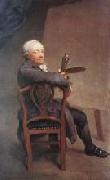 |
GRAFF, Anton
|
|
Swiss-born German Painter, 1736-1813
Swiss painter, active in Germany. He was a pupil of Johann Ulrich Schellenburg (1709-95) in Winterthur and continued his training with Johann Jakob Haid in Augsburg between 1756 and 1765. He worked for the court painter Leonhard Schneider (1716-62) in Ansbach from 1757 to 1759, producing large numbers of copies of a portrait of Frederick the Great (probably by Antoine Pesne). This was an important step in furthering his career, as were the months he spent in Regensburg (1764-5) painting miniatures of clerics and town councillors. He was court painter to the Elector Frederick-Christian of Saxe-Weimar in Dresden from 1766 and taught at the Hochschule der Bildende Kenste there. In 1771 he travelled to Berlin, where he painted portraits of Jakob Mendelssohn, Gotthold Ephraim Lessing and J. G. Sulzer. Sulzer introduced him at court, which resulted in many commissions. He was invited several times to teach at the Akademie der Kenste in Berlin, but he remained in Dresden. He often travelled to Leipzig, and in summer he frequently went to Teplitz |
|
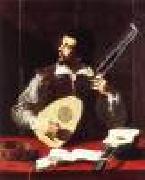 |
GRAMATICA, Antiveduto
|
|
Italian Baroque Era Painter, 1571-1626
Italian painter. He was from a Sienese family. According to Baglione, his parents were journeying from Siena to Rome when his mother went into labour and gave birth to him at an inn, an inconvenience that had been foreseen ('antiveduto') by his father and led to his unusual name. For a brief period he was a pupil of Giandomenico Angelini ( fl 1550-1600), under whom he painted small-scale works, mainly on copper. His prolific production of devotional paintings, portraits and copies of portraits won him swift success; in 1593 he became a member of the Accademia di S Luca and in 1604 of the Congregazione dei Virtuosi. His early portraits have not been identified; they included highly popular copies of a series of Famous Men then at the Villa Medici, works that Caravaggio probably also copied when he worked for some months in his studio on his arrival in Rome in 1592 |
|
|
|
|

